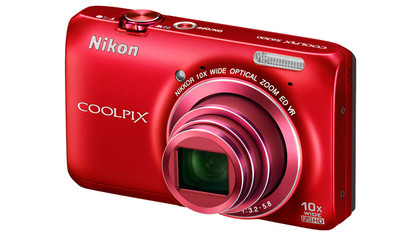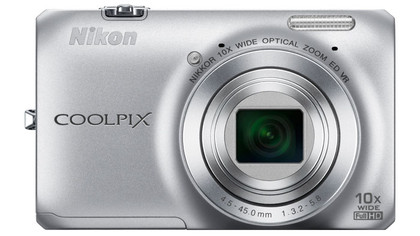Why you can trust TechRadar
The Nikon Coolpix S6300 has a very sleek and stylish design, with rounded edges adding to its overall polished look. It's a very slim camera, making it a good size for slipping into a pocket or a handbag. It's impressive that a 10x optical zoom lens is able to squeeze itself into the small body of the camera.
Start-up is relatively quick, with powering on and focusing all taking place within roughly a second. If left alone for a while, the camera will go into a 'sleep' mode. Rousing it from this can take longer than powering it on in the first place, so it's advisable to switch it off altogether if you think you won't be shooting for a few minutes.
Zooming is done via a ring-switch around the shutter release button. This feels reasonably sturdy, and the zooming action itself is smooth and quick. Digital zooming is a little slower, but this is something common of most cameras with this functionality.

The shutter release button feels pretty sturdy, and it's not so flimsy as to accidentally press it down when trying to half-press the shutter to lock focus. There's no finger grip on the front of the camera, but holding it one-handed still feels relatively secure, especially with a studded thumb rest on the back of the camera to aid grip.
There's not a huge number of buttons on the back of the camera, but those that are present are well laid out. A dedicated movie button sits next to the thumb rest in a handy position for quickly capturing films.
A scroll dial doubles up as four way directional arrows, which can be used for various functions. Commonly used settings, such as exposure compensation, macro mode and flash can be accessed by pressing the directional keys, while the scroll dial can be used for navigating through menus.

A camera/scene button is the place to access the different kinds of shooting mode. Here you can go from fully automatic, to scene modes, to digital filter modes, and so on.
For more extensive settings changes, you need to hit the Menu button. Only when shooting in fully automatic does this bring up the full menu - when using other settings, only the resolution of images can be altered via the Menu button.
The menu itself is not full of pages of hundreds of different settings, thankfully, and everything is pretty much where you'd expect it to be. Since the intended audience for this camera is very much novice point-and-shooters, there is very little in the way of manual changes.

You can select the sensitivity (ISO), exposure compensation, white balance, autofocus mode and AF area mode. Unusually for a compact camera at this level, you can elect to manually set the AF point. To do this, choose Manual from the AF area mode menu.
Once back in shooting mode, hit the central OK button to bring up a box that can be moved using the scroll dial or directional areas to correspond with the AF point you wish to use.
A number of editing options are available via the Playback menu, which can be accessed by pressing the menu button while looking at an image. Here you can perform a Quick Retouch, crop an image, soften skin or add filter effects.
It's handy to have these options here, and it potentially reduces the time you might spend at the computer editing images.
Amy has been writing about cameras, photography and associated tech since 2009. Amy was once part of the photography testing team for Future Publishing working across TechRadar, Digital Camera, PhotoPlus, N Photo and Photography Week. For her photography, she has won awards and has been exhibited. She often partakes in unusual projects - including one intense year where she used a different camera every single day. Amy is currently the Features Editor at Amateur Photographer magazine, and in her increasingly little spare time works across a number of high-profile publications including Wired, Stuff, Digital Camera World, Expert Reviews, and just a little off-tangent, PetsRadar.

